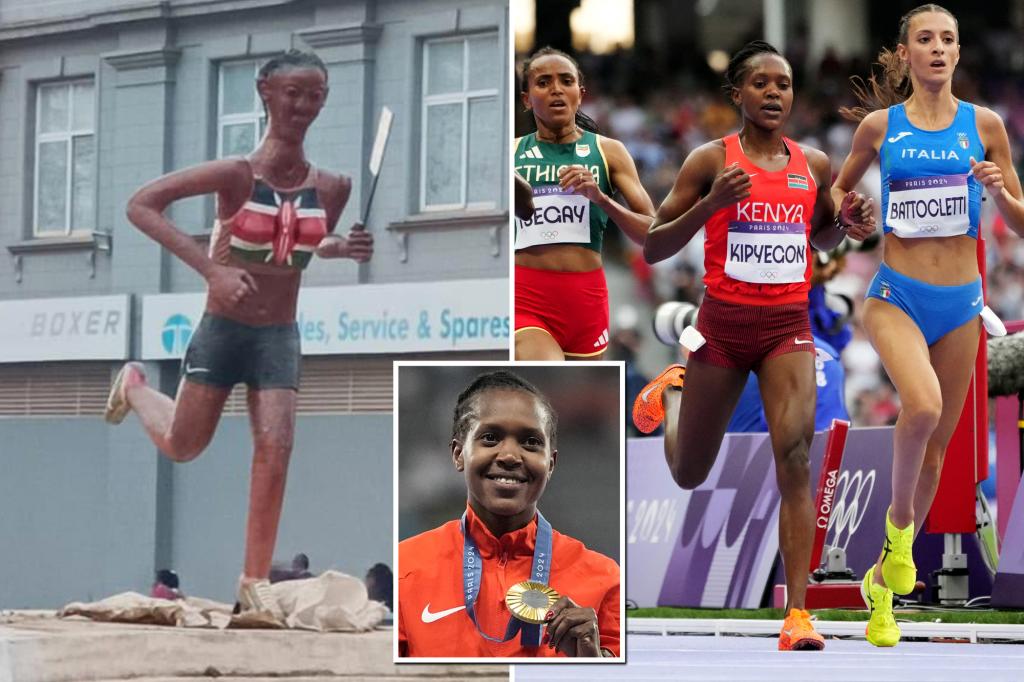New statues in Kenya representing legendary long distance runners have sparked outrage as fans claim they do not resemble the athletes they are supposed to portray. The statues, unveiled in Eldoret, depicted athletes such as Eliud Kipchoge and Faith Kipyegon, but were quickly criticized by residents who called them a “disgrace” and a “joke.” The poorly designed sculptures were deemed embarrassing and symbolic of the country’s mediocrity, leading to a social media uproar comparing them to more detailed and realistic statues in other locations.
The statues were taken down less than a week after being unveiled, with residents claiming that the representations did not do justice to the town’s status as the “home of champions.” Eldoret, located in the Rift Valley, is known for producing many world champion runners, and the statues were meant to honor the town’s sports and agricultural history. Despite the lack of clarity on which athletes the statues were meant to depict, social media users identified them as Kipyegon and Kipchoge, both accomplished runners on the international stage.
Criticism of the statues extended to soulful accusations of the artists not seeing heaven for their work, and comparisons with statues in the United States that were considered much more realistic and detailed. The lack of resemblance to the athletes portrayed led to widespread disappointment and frustration among fans and residents in Kenya. The sculptures were intended to pay tribute to the country’s athletic success at the Paris Olympics, where Kenya was the highest-ranked African nation, but instead, they became a point of ridicule and scorn.
The backlash against the statues highlighted a larger issue of artistic representation and national pride. The poorly designed sculptures were seen as an insult to the talented athletes they were meant to honor and a reflection of a collective mediocrity in the country. The removal of the statues only confirmed the dissatisfaction with the representations and raised questions about the process behind their creation. The incident ultimately sparked discussions about the importance of accurate and respectful artistic portrayals, especially when commemorating national heroes and sporting legends.
The controversy surrounding the statues in Eldoret brought attention to the intersection of art, culture, and national identity. The statues, intended to celebrate Kenya’s rich history of long distance running, became symbols of disappointment and embarrassment. The uproar on social media and the subsequent removal of the statues highlighted the power of public opinion and the need for thoughtful and respectful representation in art. The incident serves as a cautionary tale about the importance of honoring national heroes with dignity and accuracy, and the consequences of failing to do so in the eyes of the public and the international community.


